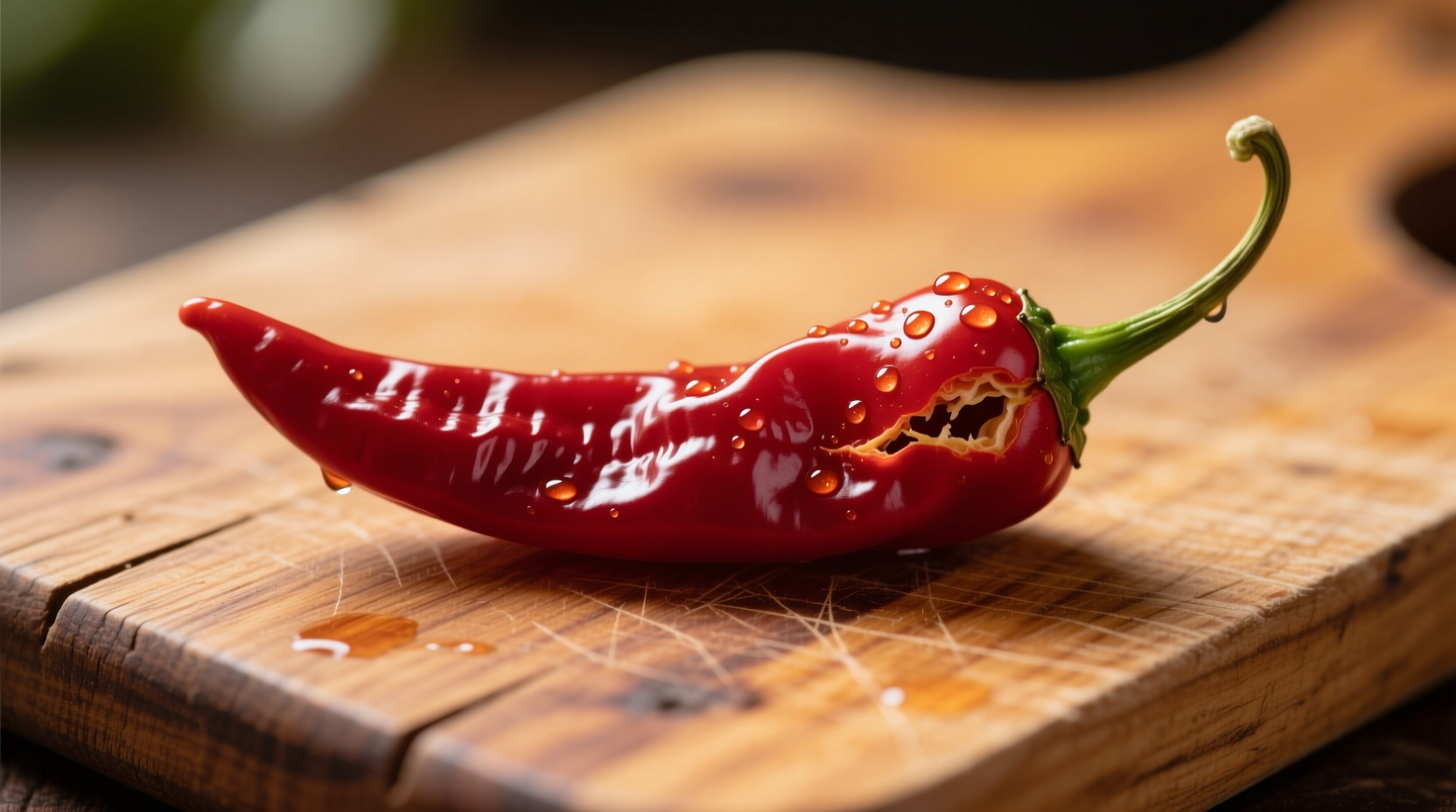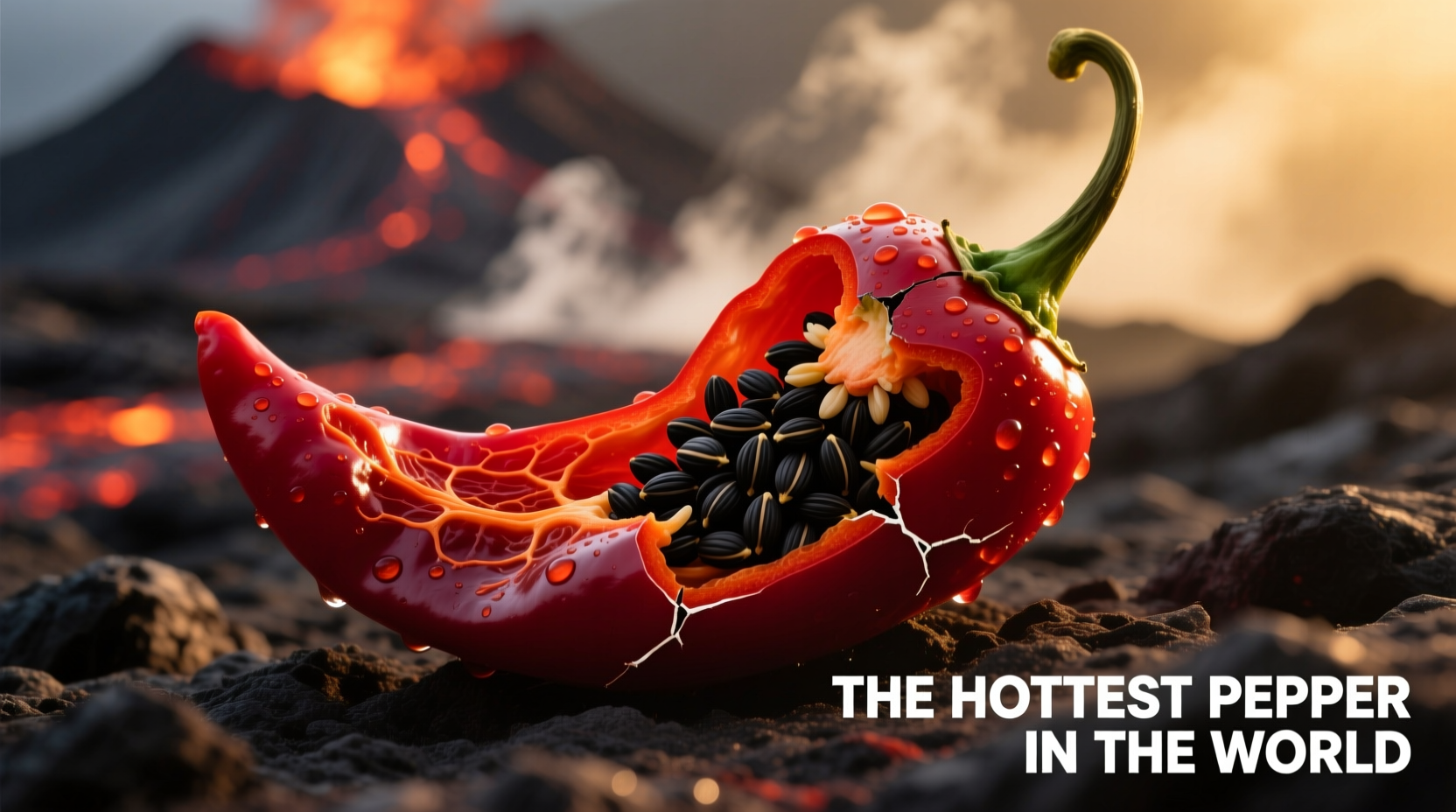For spice enthusiasts and culinary adventurers, understanding the world's hottest pepper isn't just about extreme heat—it's about appreciating the science, history, and practical applications of these remarkable botanical specimens. This comprehensive guide delivers verified information about Pepper X and its place in the chili pepper hierarchy, helping you navigate the world of superhots safely and knowledgeably.
The Science Behind Extreme Heat
Pepper heat is measured using the Scoville scale, which quantifies the concentration of capsaicinoids—the chemical compounds responsible for that burning sensation. Developed by pharmacist Wilbur Scoville in 1912, this measurement system has evolved from subjective human taste tests to precise high-performance liquid chromatography (HPLC) analysis.
When you consume capsaicin, it triggers TRPV1 receptors in your mouth and throat, which your brain interprets as heat. The higher the Scoville rating, the more capsaicin present, and the more intense this reaction becomes. Pepper X's staggering 3.18 million SHU means it contains approximately 600 times more capsaicin than a typical jalapeño (5,000 SHU).
Pepper X: The Record-Breaking Superhot
Developed over a decade by Ed Currie of the PuckerButt Pepper Company in South Carolina, Pepper X represents the culmination of selective breeding between Carolina Reaper and another undisclosed superhot pepper. Officially verified by Winthrop University in 2023, this pepper earned the Guinness World Records title in 2023, displacing the Carolina Reaper which had held the title since 2013.
Unlike many superhots that deliver immediate, overwhelming heat, Pepper X features a delayed reaction pattern. Consumers typically experience a 30-45 second latency period before the full heat impact registers, making accidental overconsumption a genuine risk. The heat profile includes:
- Initial sweet, fruity flavor (reminiscent of stone fruits)
- Delayed but intense burning sensation
- Long-lasting heat that can persist for 20-45 minutes
- Distinctive numbing quality after the initial burn subsides

Evolution of the Hottest Pepper Title
The quest for the world's hottest pepper has accelerated dramatically in recent decades. This timeline shows how record-breaking peppers have evolved through selective breeding:
| Year | Pepper Variety | Scoville Heat Units | Key Developer |
|---|---|---|---|
| 1994 | Habanero (Red Savina) | 577,000 SHU | GNS Spices |
| 2007 | Bhut Jolokia (Ghost Pepper) | 1,041,427 SHU | Trinity School of Agriculture |
| 2011 | Naga Viper | 1,382,118 SHU | Nigel Davies |
| 2013-2023 | Carolina Reaper | 1,400,000-2,200,000 SHU | Ed Currie |
| 2023-Present | Pepper X | 3,180,000 SHU | Ed Currie |
This progression reflects both advances in breeding techniques and increased interest in superhot peppers. According to the Chile Pepper Institute at New Mexico State University, the average heat level of commercially available hot peppers has increased by approximately 300% since the 1990s as breeders selectively emphasize capsaicin production.
Practical Considerations for Handling Superhots
Working with Pepper X requires serious precautions that many home cooks overlook. Understanding these context boundaries is essential for safe handling:
- Never handle without protection: Capsaicin oils can transfer to skin and eyes—always wear nitrile gloves and eye protection
- Ventilation matters: Cutting superhots releases capsaicin vapors that can irritate respiratory passages—work near a vent or outdoors
- Equipment separation: Dedicate specific cutting boards and knives for superhots to prevent cross-contamination
- Heat activation: Cooking concentrates capsaicin—adding Pepper X to hot oil increases its effective heat level
The National Institute for Occupational Safety and Health (NIOSH) reports that emergency room visits related to home pepper handling have increased by 68% since 2015, primarily due to improper handling of superhot varieties. Most incidents occur when people underestimate the delayed reaction time of peppers like Pepper X.
Culinary Applications: When and How to Use Pepper X
Despite its extreme heat, Pepper X has legitimate culinary applications when used correctly. Professional chefs emphasize these key principles:
- Use in minute quantities—often just a few granules of powdered Pepper X suffice for an entire dish
- Best incorporated into oil-based preparations where heat distributes evenly
- Ideal for hot sauces where its fruity notes can complement other ingredients
- Never add directly to finished dishes—always incorporate during cooking
"The mistake most home cooks make is treating Pepper X like a regular chili," explains Chef Hiroko Shimbo, author of The Japanese Pepper Cookbook. "This is a flavoring agent measured in milligrams, not a vegetable you chop and add by the teaspoon. Respect its power and it can add remarkable complexity to your cooking."
Safety Protocols for Superhot Pepper Exposure
If you experience excessive exposure to Pepper X, follow these medically recommended steps:
- Immediately stop handling the pepper
- Rinse affected area with cold water for 15 minutes (avoid warm water which opens pores)
- Apply whole milk or yogurt to skin—casein helps break down capsaicin
- For eye exposure, flush with saline solution for 15 minutes
- For internal discomfort, consume dairy products or starchy foods (rice, bread)
- Seek medical attention if symptoms persist beyond 30 minutes
According to the American Association of Poison Control Centers, over 2,300 cases of pepper-related incidents were reported in 2022, with nearly 40% involving superhot peppers. Most required medical intervention due to improper handling techniques.
Where to Source Authentic Pepper X
Due to its extreme nature, Pepper X remains relatively scarce in mainstream markets. Your best options include:
- PuckerButt Pepper Company (official source for seeds and products)
- Specialty hot sauce manufacturers with direct relationships with growers
- Certified farmers markets with verified superhot vendors
- Reputable online retailers with third-party heat verification
Beware of counterfeit products claiming extreme heat levels without proper verification. The Chile Pepper Institute recommends looking for HPLC test results when purchasing superhot products, as visual identification alone cannot verify heat levels.
Frequently Asked Questions
Is Pepper X safe to eat?
Pepper X is safe to eat in extremely small quantities for most healthy adults, but requires careful handling. Consuming large amounts can cause severe gastrointestinal distress, temporary breathing difficulties, and in rare cases, more serious reactions. Those with digestive conditions, heart problems, or respiratory issues should avoid it entirely.
How does Pepper X compare to military-grade pepper spray?
Pepper X at 3.18 million SHU approaches but doesn't quite reach military-grade pepper spray levels (typically 2-5 million SHU). Police-grade pepper spray usually measures 1-2 million SHU. This comparison highlights why proper handling precautions are essential when working with Pepper X.
Can you grow Pepper X at home?
Yes, but with significant challenges. Pepper X requires 220+ days to mature, consistent temperatures between 75-90°F, high humidity, and careful pest management. Most home growers report lower heat levels than commercial specimens due to suboptimal growing conditions. Strict isolation from other pepper plants is necessary to prevent cross-pollination.
Why do people keep breeding hotter peppers?
Beyond novelty, hotter peppers have legitimate applications in pain management research, natural pesticide development, and food preservation. The capsaicin in superhots shows promise for treating neuropathic pain and certain skin conditions. Additionally, understanding extreme capsaicin production helps scientists develop milder, more flavorful peppers through selective breeding.











 浙公网安备
33010002000092号
浙公网安备
33010002000092号 浙B2-20120091-4
浙B2-20120091-4